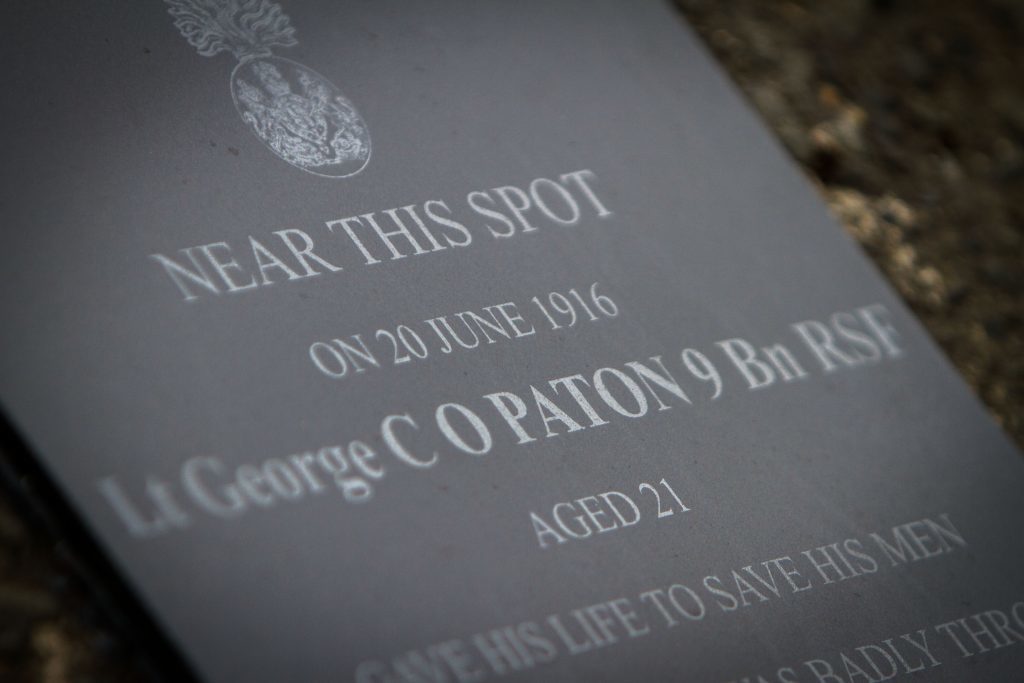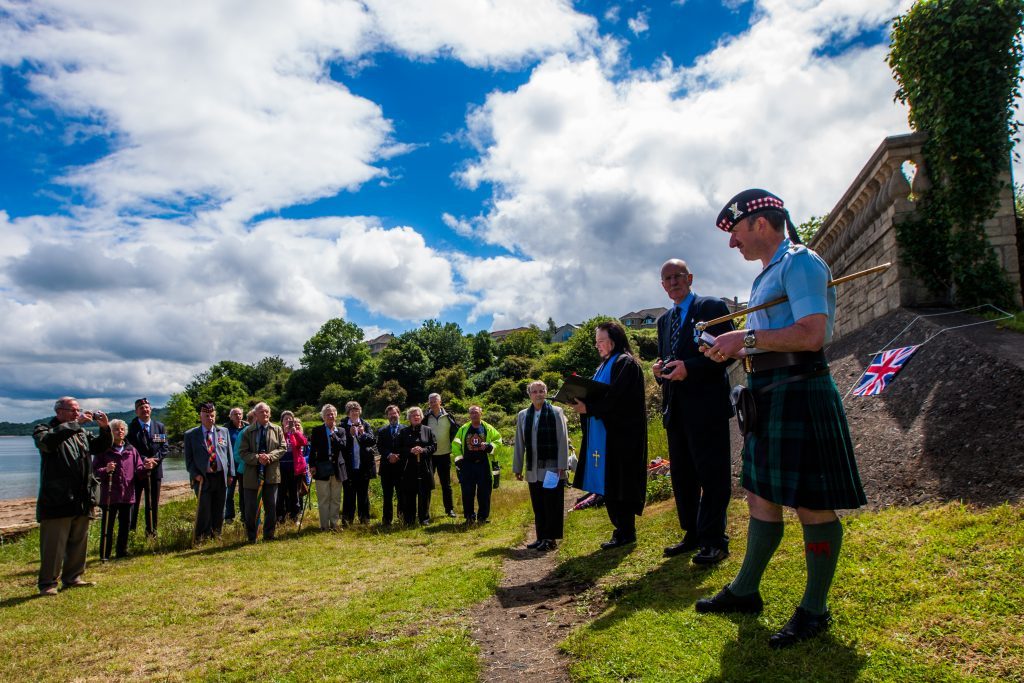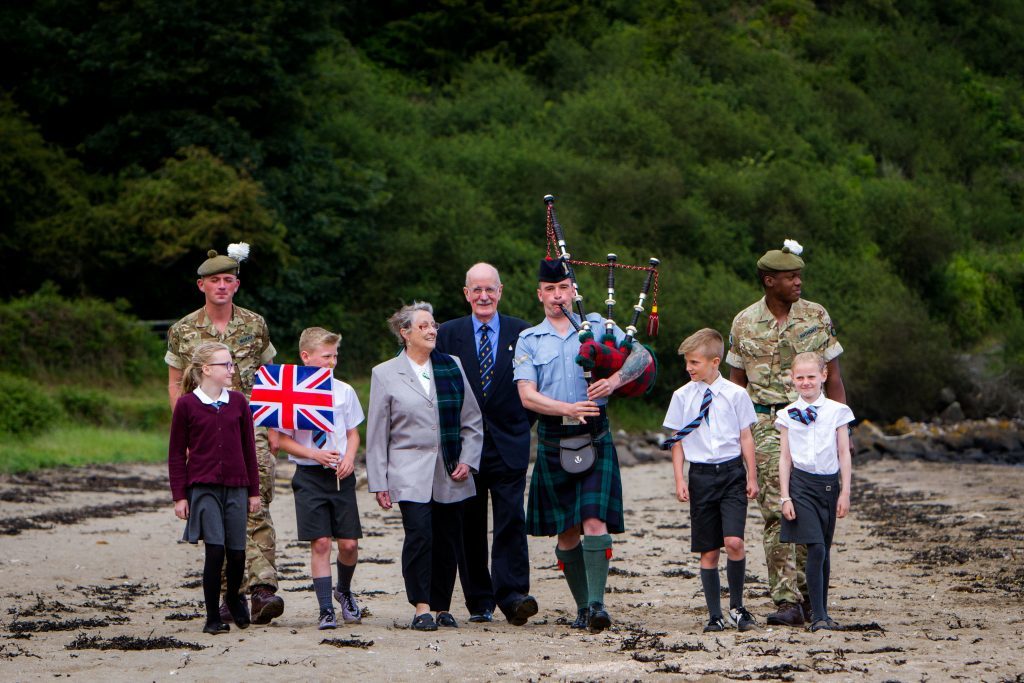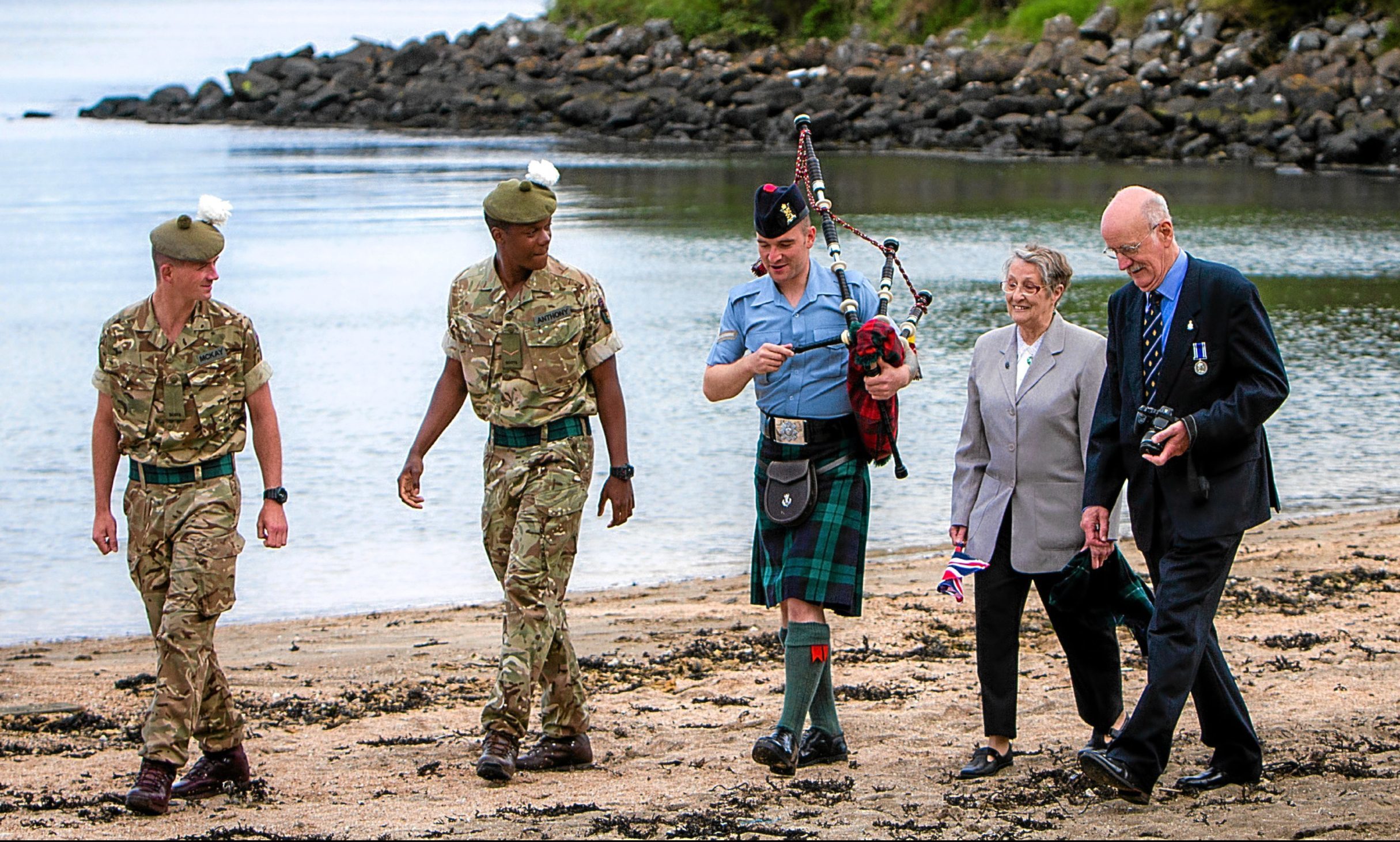The incredible story of a soldier who sacrificed his own life on a Fife beach to save those of his men has been permanently marked.
Dozens gathered at Port Laing Beach in North Queensferry on Monday, where 100 years ago to the day Lieutenant George Paton valiantly saved the lives of his fellow troops during a training exercise.

A plaque was unveiled at the spot where the 21-year-old threw himself on a grenade as troops from the Royal Scots Fusiliers undertook combat training.
Colin Bain, from the North Queensferry Heritage Trust, said the remarkable act of bravery only came to light after the group started researching the local war dead.
“The trust were researching names on the war memorial and we started looking into the names,” he said. “One of those was George Paton.
“With the wonders of the internet we found out about him and his family and what piqued my interest was his place of birth, which was Buenos Aires.

“Throwing grenades was a major part of training and one of the most dangerous things they could do.
“The factory-made grenade was only introduced in 1915 and as far as we know they came here to practise with those.”
On Tuesday June 20 1916, Lieutenant Paton had been leading a group of men in a grenade-throwing exercise when one that had been poorly thrown landed near some of the men.
Seeing the danger, he called out a warning and then dashed forward in an attempt to throw the device to a safe distance.
Despite his quick reactions, Lt. Paton arrived as it exploded, killing him instantly.
However, his body shielded his fellow members of the group from the blast, saving several lives.

Born in Argentina in 1894, “Ges”, as he was known, was just one of 5,000 men who travelled from South America to fight for the British cause during World War One.
Unveiling the memorial was Mr Paton’s second cousin, Vesta Darnell, who had travelled from Surrey especially for the short service, which was also attended by members of 2nd Battalion Royal Regiment of Scotland and the Regimental Association, which carries on the traditions of the former Royal Scots Fusiliers.
Mrs Darnell said: “Relatives back in Argentina are very chuffed as he has been remembered now.
“I am very proud of him and terribly honoured to be asked to unveil the plaque.
“Everyone has worked so hard to make this happen and everybody associated with George appreciates that.”
